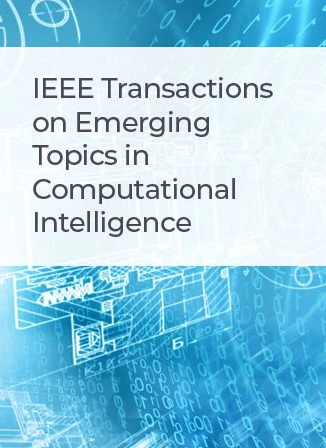A Novel Hypercomplex Graph Convolution Refining Mechanism
IF 5.3
3区 计算机科学
Q1 COMPUTER SCIENCE, ARTIFICIAL INTELLIGENCE
IEEE Transactions on Emerging Topics in Computational Intelligence
Pub Date : 2024-09-05
DOI:10.1109/TETCI.2024.3449877
引用次数: 0
Abstract
Hypercomplex graph convolutions with higher hypercomplex dimensions can extract more complex features in graphs and features with varying levels of complexity are suited for different situation. However, existing hypercomplex graph neural networks have a constraint that they can only carry out hypercomplex graph convolutions in a predetermined and unchangeable dimension. To address this limitation, this paper presents a solution to overcome this limitation by introducing the FFT-based Adaptive Fourier hypercomplex graph convolution filtering mechanism (FAF mechanism), which can adaptively select hypercomplex graph convolutions with the most appropriate dimensions for different situations by projecting the outputs from all candidate hypercomplex graph convolutions to the frequency domain and selecting the one with the highest energy via the FFT-based Adaptive Fourier Decomposition. Meanwhile, we apply the FAF mechanism to our proposed hypercomplex high-order interaction graph neural network (HHG-Net), which performs high-order interaction and strengthens interaction features through quantum graph hierarchical attention module and feature interaction gated graph convolution. During convolution filtering, the FAF mechanism projects the outputs from different candidate hypercomplex graph convolutions to the frequency domain, extracts their energy, and selects the convolution that outputs the largest energy. After that, the model with selected hypercomplex graph convolutions is trained again. Our method outperforms many benchmarks, including the model with hypercomplex graph convolutions selected by DARTS, in node classification, graph classification, and text classification. This showcases the versatility of our approach, which can be effectively applied to both graph and text data.一种新的超复图卷积精炼机制
具有较高超复维数的超复图卷积可以从图中提取更复杂的特征,不同复杂度的特征适用于不同的情况。然而,现有的超复图神经网络存在一个限制,即它们只能在预定且不可改变的维度上进行超复图卷积。为了解决这一限制,本文通过引入基于fft的自适应傅立叶超复图卷积滤波机制(FAF机制)提出了克服这一限制的解决方案。该算法通过将所有候选超复图卷积的输出投影到频域,并通过基于fft的自适应傅立叶分解选择能量最高的超复图卷积,从而自适应地选择不同情况下最合适维数的超复图卷积。同时,我们将FAF机制应用于我们所提出的超复杂高阶交互图神经网络(HHG-Net),该网络通过量子图分层关注模块和特征交互门控图卷积进行高阶交互并增强交互特征。在卷积滤波过程中,FAF机制将不同候选超复图卷积的输出投影到频域,提取其能量,选择输出能量最大的卷积。之后,再次训练选定的超复图卷积模型。我们的方法在节点分类、图分类和文本分类方面优于许多基准测试,包括由DARTS选择的具有超复杂图卷积的模型。这展示了我们方法的多功能性,它可以有效地应用于图形和文本数据。
本文章由计算机程序翻译,如有差异,请以英文原文为准。
求助全文
约1分钟内获得全文
求助全文
来源期刊

IEEE Transactions on Emerging Topics in Computational Intelligence
Mathematics-Control and Optimization
CiteScore
10.30
自引率
7.50%
发文量
147
期刊介绍:
The IEEE Transactions on Emerging Topics in Computational Intelligence (TETCI) publishes original articles on emerging aspects of computational intelligence, including theory, applications, and surveys.
TETCI is an electronics only publication. TETCI publishes six issues per year.
Authors are encouraged to submit manuscripts in any emerging topic in computational intelligence, especially nature-inspired computing topics not covered by other IEEE Computational Intelligence Society journals. A few such illustrative examples are glial cell networks, computational neuroscience, Brain Computer Interface, ambient intelligence, non-fuzzy computing with words, artificial life, cultural learning, artificial endocrine networks, social reasoning, artificial hormone networks, computational intelligence for the IoT and Smart-X technologies.
 求助内容:
求助内容: 应助结果提醒方式:
应助结果提醒方式:


